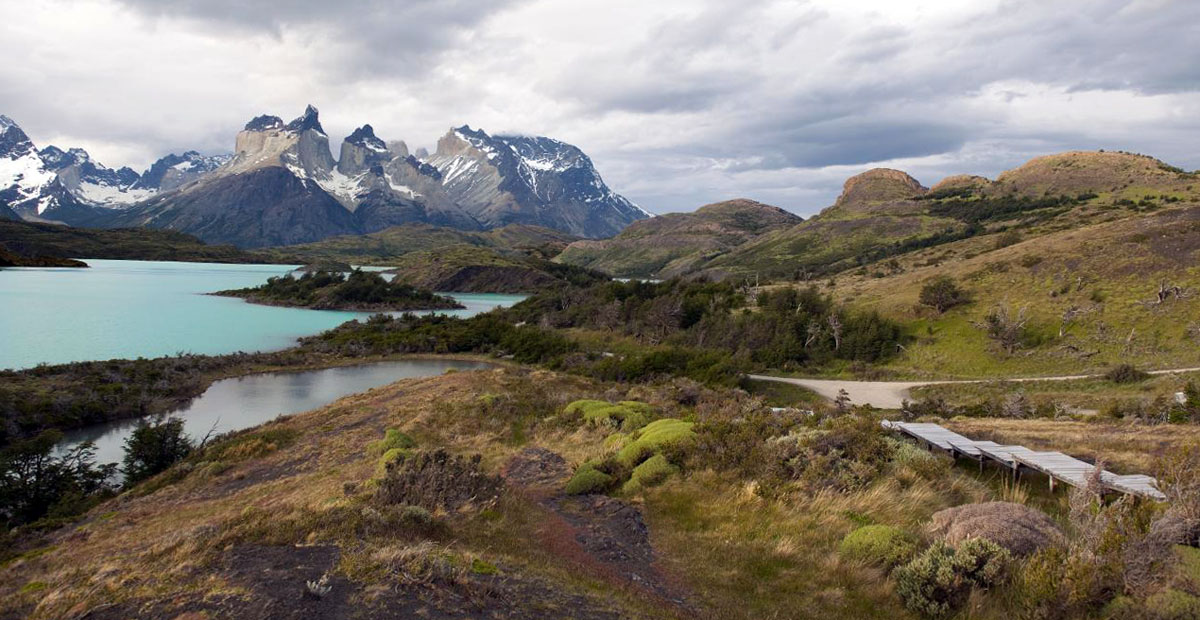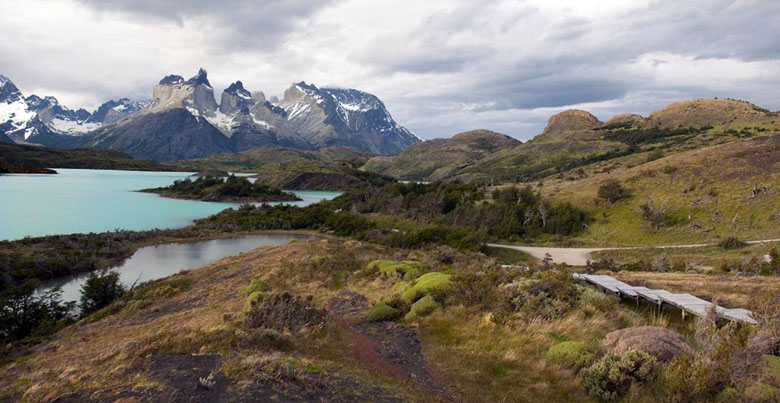

Torres del Paine National Park is located in southern Chile five hours north of Punta Arenas, the closest airport. Puerto Natales has a small airport but flights there are virtually non-existent. Below is the relevant information on how to get to Torres del Paine including flights and buses. Keep in mind that buses in Patagonia are fairly relaxed and you shouldn’t be in a huge hurry. Try to build in a small buffer on each end of the trip to account for rest stops and possible delays.
The Punta Arenas airport, located 360 kilometers and 5 hours south of Torres del Paine National Park. It's the closest airport to the park and has daily non-stop flights from Santiago. From Punta Arenas, the majority of people travel onward by bus to Puerto Natales, which is where many of the accommodations are located (an increasing number of luxury hotels are located closer to the park but most travelers on budget bookend their trip in Puerto Natales. By bus, it's 3 hours to Puerto Natales and an additional 2 hours to the park. Most high-end hotels provide private transportation from Punta Arenas for their guests.
The easiest and cheapest way to get from Punta Arenas to Puerto Natales is the many buses that run daily (private cars start at 50,000 pesos and aren’t much faster). Tourist buses in Patagonia generally are comfortable, clean, and safe. There are no direct buses from Punta Arenas to Torres del Paine National Park; first you must stop in Puerto Natales.
For those traveling to Puerto Natales directly from the Punta Arenas airport, drivers will encourage you to take their shuttle to the downtown bus terminal first. The airport, however, is the last stop on the way out of town, and waiting there for the next bus can save time on both ends plus the cost of the shuttle. Upon arriving at the airport, buses often have empty seats, or you can contact the bus companies to reserve an airport pick-up.
Buses Fernandez: 2016 schedule from Punta Arenas to Puerto Natales (Cost: approximately 7,000 pesos one-way): 8:00, 9:00, 13:00, 14:30, 17:00, 18:30, 20:00
Buses Sur: 2016 schedule from Punta Arenas to Puerto Natales (Cost: approximately 76000 pesos one-way): 10:00, 12:30, 15:00, 17:15, 19:00
Puerto Natales, 113 km and 2 hours south of Torres del Paine National Park, is the hub for Torres del Paine and where most travelers stay before visiting the park. Two daily buses, one in the morning and one in the afternoon, run from Puerto Natales to Torres del Paine. It’s approximately 2 hours from Puerto Natales to the Laguna Amarga ranger station including a rather lengthy rest stop on the way. The buses stop at three places in the park: Laguna Amarga, Pudeto (the location of the catamaran, whose departures correspond with the arrival of the buses), and lastly the park administration center.
Buses Pacheco: 2016 schedule from Puerto Natales to Torres del Paine National Park (Cost: 8,000 pesos one-way and 15,000 pesos round-trip): 07:30, 14:30
For the 2016 high season, buses depart from the Laguna Amarga ranger station to Puerto Natales each day at 13:00 and 18:00 (to get from the trailhead to Laguna Amarga, shuttles run back and forth for $2,500 pesos, or you can walk the additional 11km). Pick-up times at Pudeto are approximately 45 minutes prior to Laguna Amarga, but make sure to confirm the exact time with the driver on the way in.
Bus companies want you to buy round-trip tickets, but you may want to avoid doing so in order to keep your transportation options open when coming out of the park. On our recent trip, for example, we booked a one-way bus ticket into the park, finishing the “W” Circuit four days later at Laguna Amarga at 11:30. Instead of waiting 3 hours for the next bus, we split a van ride to Puerto Natales with another pair for $25 each. It was slightly more expensive than the bus, but we arrived in Puerto Natales many hours earlier and civilization was a welcome site after multiple days on the trail.
Be patient when taking buses in Patagonia. They often arrive slightly early or late but the time frames are dependable. Rest stops are commonplace and calculated into the schedule. For individuals and small groups bus travel is reasonably pleasant and the most convenient and cost effective form of transportation. Larger groups can consider hiring a private transfer.